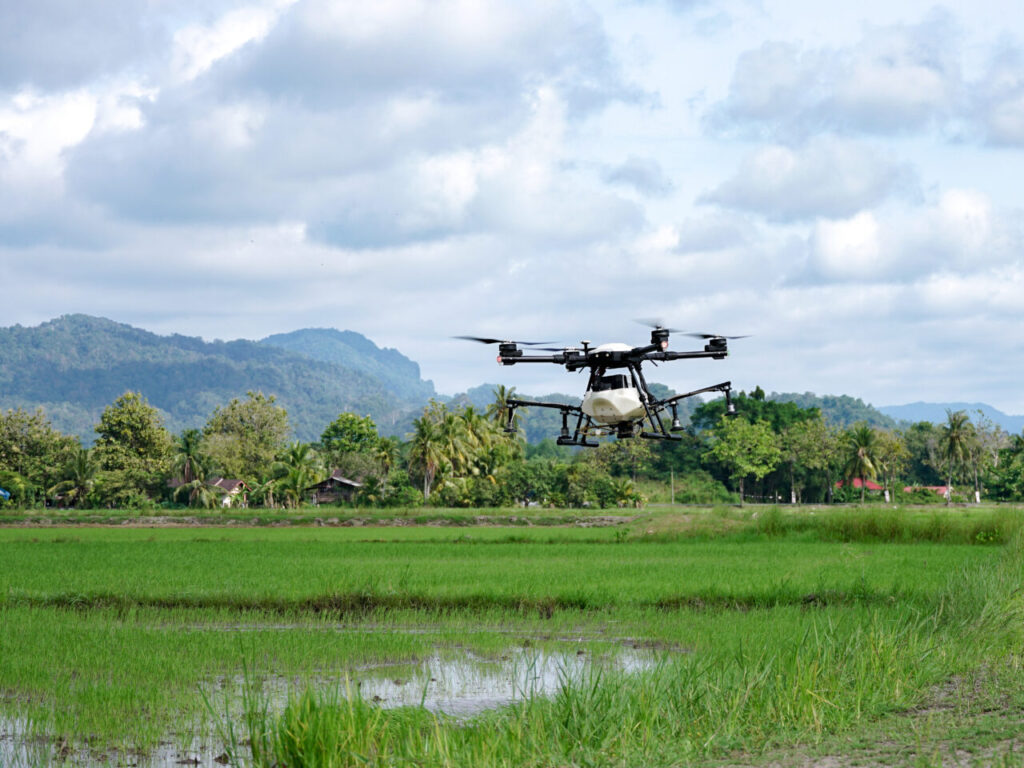Introduction
Unmanned Aerial Vehicles (UAVs), commonly known as drones, have emerged as revolutionary technology with applications spanning various industries and sectors. These versatile and agile aircraft are piloted remotely or operate autonomously, opening up new possibilities for efficiency, safety, and data collection. From aerial photography and surveillance to delivery services and scientific research, Unmanned Aerial Vehicles (UAVs) have transformed the way we approach numerous tasks. In this article, we explore the wide-ranging applications and potential of unmanned aerial vehicles.
Types of Unmanned Aerial Vehicles (UAVs)
There are various types of UAVs (Unmanned Aerial Vehicles) available, each designed for specific purposes and applications. Here are some common types of UAVs:
Multirotor UAVs

Multirotor UAVs, also known as quadcopters, are the most recognizable types of UAVs. They feature multiple rotors (typically four, but can have more) arranged in a symmetric configuration. Multirotor are highly maneuverable, capable of vertical takeoff and landing (VTOL), and can hover in place. They are commonly used for aerial photography, videography, surveillance, and inspection tasks.
Fixed-wing UAVs

Fixed-wing UAVs resemble traditional airplanes and have fixed wings, similar to manned aircraft. Unlike multirotor, they rely on forward motion generated by a propulsion system to achieve lift and stay airborne. Fixed-wing UAVs are known for their efficiency and long flight endurance, making them ideal for tasks requiring large area coverage, such as aerial mapping, surveying, and agricultural applications.
Hybrid VTOL UAVs

Hybrid VTOL (Vertical Take Off and Landing) UAVs combine the features of both multirotor and fixed-wing UAVs. They are capable of taking off and landing vertically like a multirotor, but once in the air, they transition to fixed-wing flight for increased range and endurance. These UAVs offer flexibility for missions that require both hover capability and efficient forward flight, such as long-range inspections or aerial surveillance.
Single-Rotor and Fixed-Pitch UAVs

Single-rotor UAVs, also known as helicopters or rotorcraft, have a large main rotor that provides lift and propulsion. They are typically used for specialized applications, such as military operations, search and rescue missions, or heavy-lifting tasks. Fixed-pitch UAVs, a subcategory of single-rotor UAVs, have a fixed-angle rotor and are simpler in design, often used for hobbyist purposes or in entry-level commercial applications.
Micro UAVs

Micro UAVs are small and lightweight UAVs designed for close-range operations. They are often used in indoor environments or areas where larger UAVs cannot maneuver effectively. Micro UAVs can be multirotor or fixed-wing and are utilized for tasks such as indoor mapping, inspections, or surveillance in confined spaces.
Autonomous UAVs
Autonomous UAVs are equipped with advanced flight control systems, sensors, and onboard computing capabilities. These UAVs can operate without direct human intervention, following pre-programmed flight paths or executing autonomous mission based on real-time data analysis. Autonomous UAVs are used in applications like aerial surveys, scientific research, monitoring tasks that require long-duration, repetitive missions.
7 Advantages of Utilizing Unmanned Aerial Vehicles Technology
Unmanned Aerial Vehicles (UAVs), also known as drones, offer a wide range of benefits across various industries and sectors. The following are some key advantages of utilizing UAV technology:
Enhanced 安全设施
One of the primary benefits of UAVs is the improved safety they provide. By eliminating the need for human presence in hazardous or high-risk environments, UAVs mitigate the potential risks to human life. They can access and inspect hard-to-reach or dangerous areas such as tall structures, steep terrains, or disaster-stricken zones, ensuring worker safety while still collecting valuable data.
Efficiency and Cost-Effectiveness
UAVs bring significant efficiency gains to a variety of tasks. They can quickly and easily cover large areas, collecting data and performing inspections in a fraction of the time it would take with traditional methods. This efficiency translates into cost savings for businesses by reducing labor hours, improving productivity, and minimizing equipment downtime.
Versatility and Accessibility
UAVs offer unparalleled versatility in terms of maneuverability and accessibility. With their small size and ability to hover or navigate through tight spaces, drones can reach areas that would be challenging or impossible for humans or larger aircraft to access. This makes them valuable in applications such as infrastructure inspections, search and rescue operations, or environmental monitoring.
High-resolution Data Collection
Equipped with advanced imaging technologies, UAVs capture high-resolution images, videos, and sensor data. This enables detailed and accurate data collection for various purposes, including mapping, surveying, and monitoring. UAVs equipped with specialized cameras or sensors, such as thermal or multispectral sensors, provide valuable insights into crop health, infrastructure integrity , or environmental conditions.
Rapid Deployment and Flexibility
UAVs offer rapid deployment capabilities, allowing for quick response in critical situations. They can be deployed in emergency scenarios, providing real-time situational awareness to emergency responders and aiding in disaster management. Additionally, UAVs can be easily transported to different locations, making them highly flexible for use in various projects and operations.
Environmental Impact
Compared to traditional aerial or ground-based methods, UAVs have a smaller carbon footprint. They require less fuel consumption and emit fewer pollutants, contributing to a reduced environmental impact. In industries like agriculture, where UAVs are used for crop monitoring and precision agriculture, they help optimize resource use and minimize the use of fertilizers or pesticides, resulting in more sustainable practices.
Innovation and Future Potential
The field of UAV technology is continuously evolving, with ongoing advancements in areas such as autonomy, artificial intelligence, and sensor technologies. These advancements unlock new possibilities and expand the range of applications for UAVs. As technology progresses, we can expect further improvements in flight times, payload capacities, data processing capabilities, and autonomous operations.
Conclusion
Unmanned Aerial Vehicles (UAVs) offer numerous benefits across industries, including enhanced safety, increased efficiency, versatility, high-resolution data collection, rapid deployment, reduced environmental impact, and ongoing innovation. As UAV technology continues to advance, businesses and organizations are harnessing the power of drones to optimize operations, improve decision-making, and drive productivity. The potential of UAVs is vast, and their integration into various sectors holds promise for a more connected, efficient, and sustainable future.





